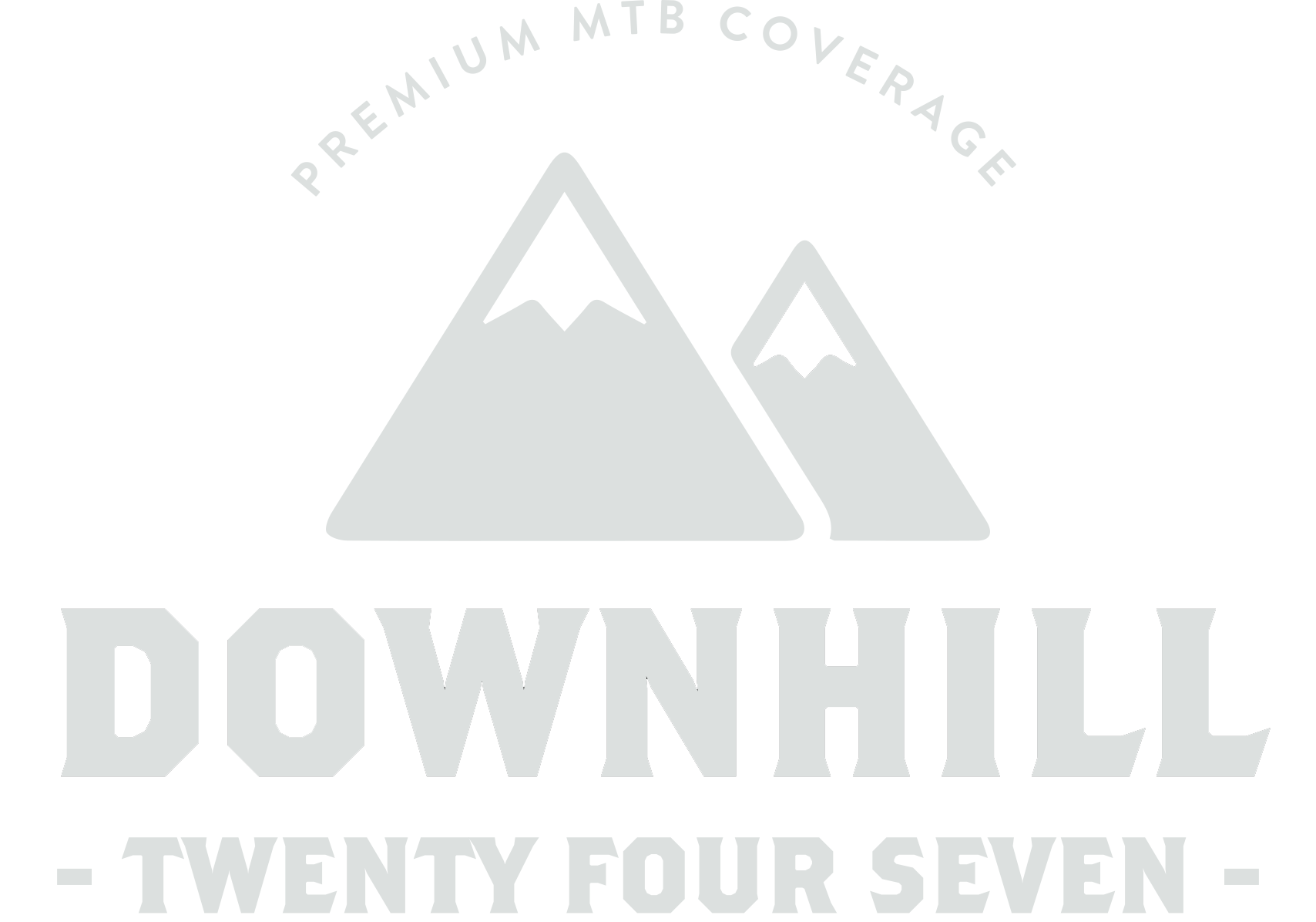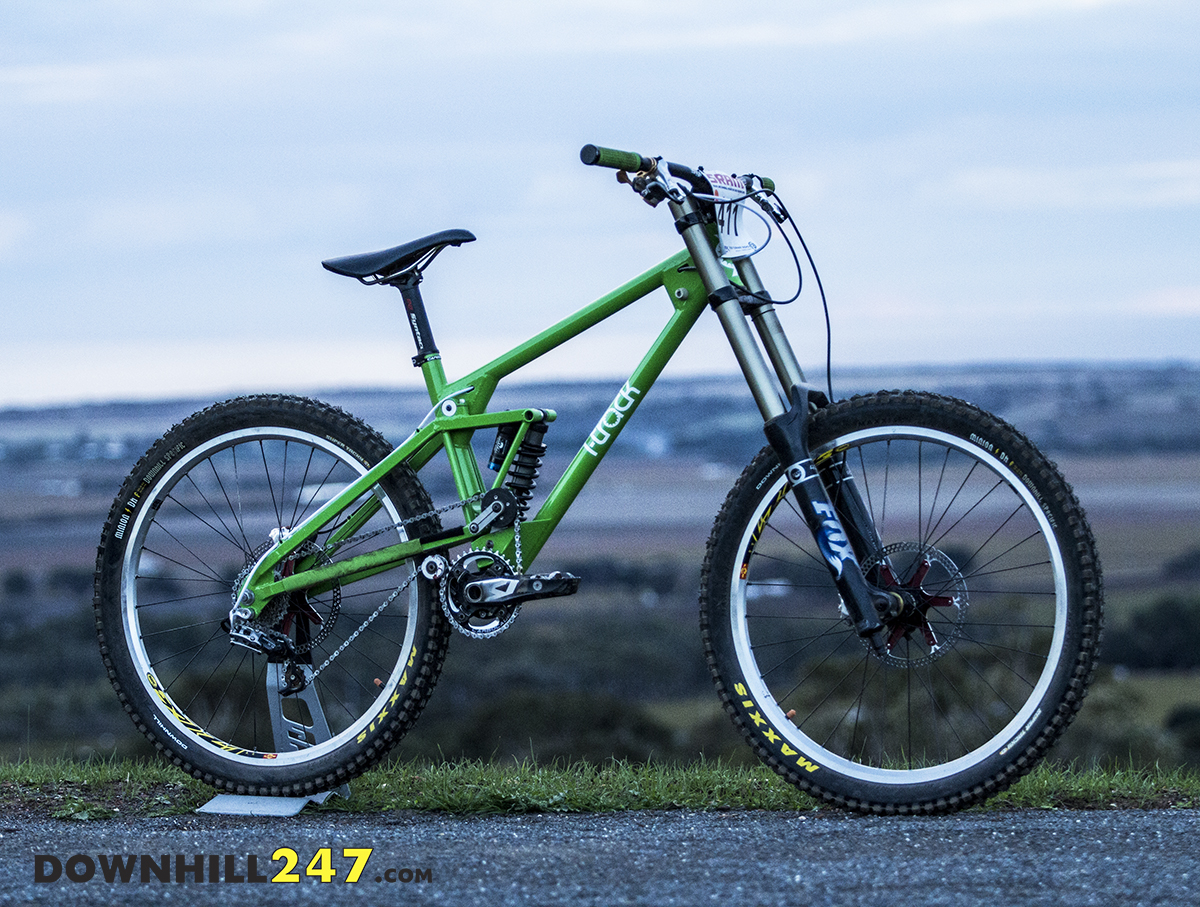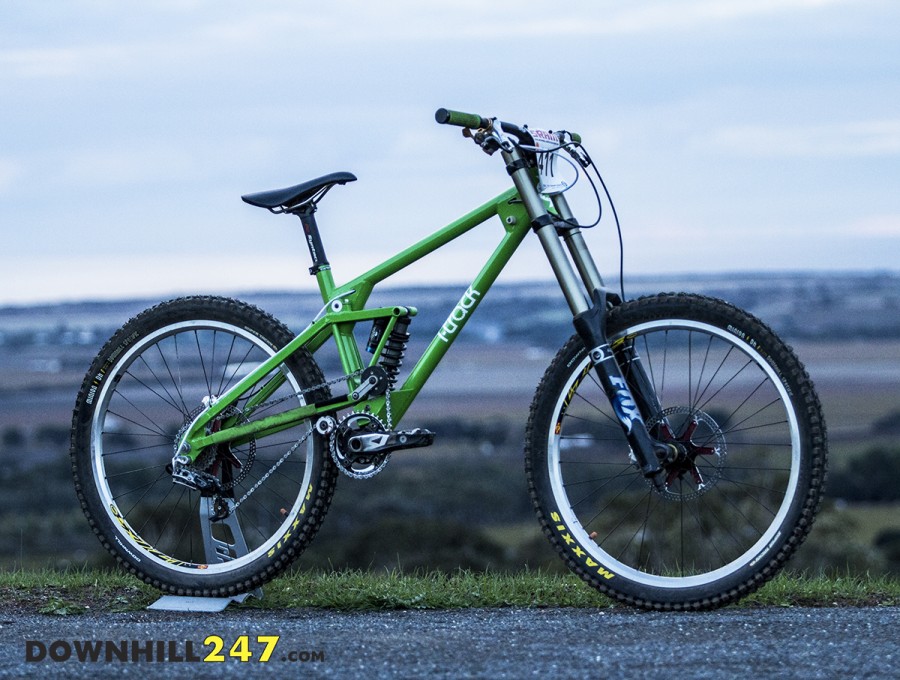
Australia has some of the best downhill riders in the world but one area that is well and truly behind our home grown riding talent is our home grown bike industry. We caught a glimpse of a beast out at one of the South Australian local Inside Line state rounds and were immediately interested, once we found out the bike was designed and built by the rider we knew an Inside Info was in order!
Hi Hugh thanks for chatting to us, before we talk about the bike can you give us a little insight into who you are and what your past work/qualifications are;
My name is Hugh McLeay, and Ia��m a 31yo Mechanical Engineer. Ia��ve been riding bikes for around 20 years. My interest in suspension design started when I was at university; my final year project involved designing, building, and racing a small race car (called Formula SAE). It was through this project that I began learning about vehicle dynamics and suspension design. Since then Ia��ve spent a lot of time thinking about ways of improving bike suspension systems. My a�?reala�� job is quite different; I work in the construction industry, and have spent the last ten years working around Australia on various mining and industrial construction projects. Ia��m currently working in Adelaide on the construction of the new Royal Adelaide Hospital.
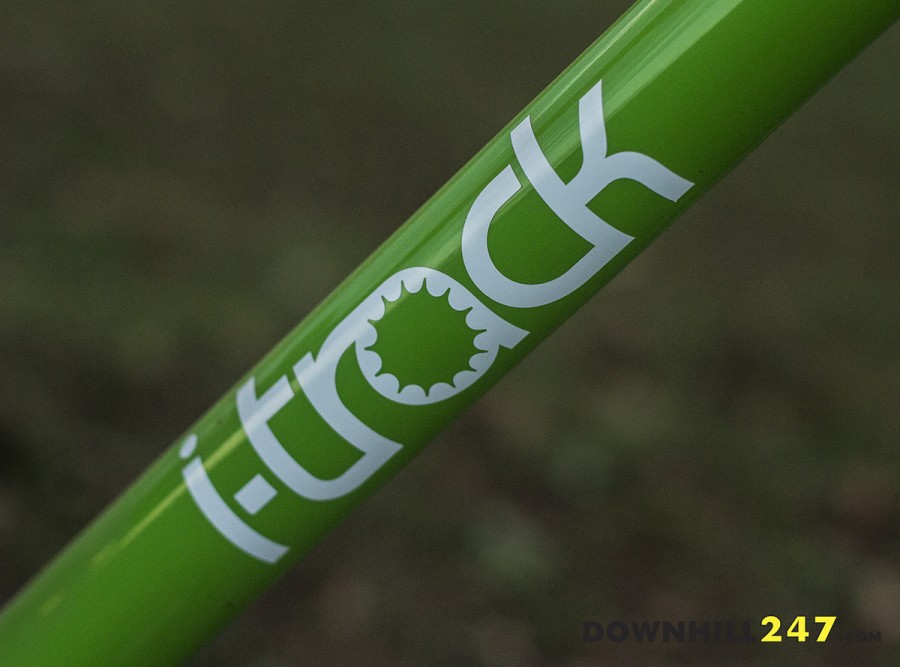
Thata��s quite impressive, clearly bikes and an interest in how things work are definitely something that you have been involved in for quite some time! How did the idea of the whole I-Track/make your own bike – situation come about?
From the design aspect, I started analysing bike suspension systems about 5 years ago. A friend came to me asking for advice, to help him decide between a couple of different bikes he was interested in. I crunched some numbers relating to the suspension performance of these bikes, and used that to describe to him how each bike would behave.
After this, I became obsessed about the characteristics that made some suspension systems perform better than others, and focused my attention to developing a suspension system that allowed for optimization of these characteristics, without the usual compromise.
From the fabrication aspect, Ia��ve always been into making things, but never previously had the right tools to be able to make a bike frame. So once I had a half decent bike frame design sorted, it was a pretty easy decision to go and buy some new tools to be able to make it.
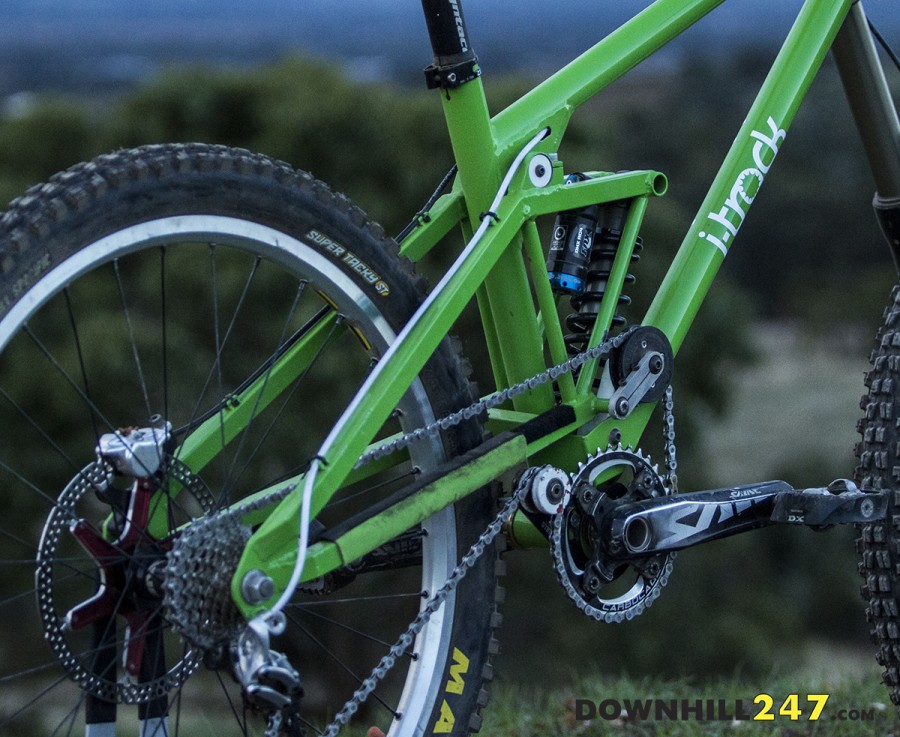
So leta��s just clarify how much of the bike we are looking at did you either design or build;
I designed and built the frame from scratch. Ita��s made out of Chromoly (steel), which I cut/shaped/welded in my shed.
The head tube and bottom bracket shell were bought from a frame building supplier, and there were a few components that I had laser cut elsewhere.
All the pivot hardware was done by a machine shop, but Ia��ve since bought my own lathe, so Ia��m doing this myself for the next prototype.
The paint job was done by Gripsport in Melbourne.
Most of the other components came off a Giant Glory, and Ia��m very fortunate to have the support of Syntace, Carbocage, and Formula components providing some nice bling.
All from home in your shed?
Yes.
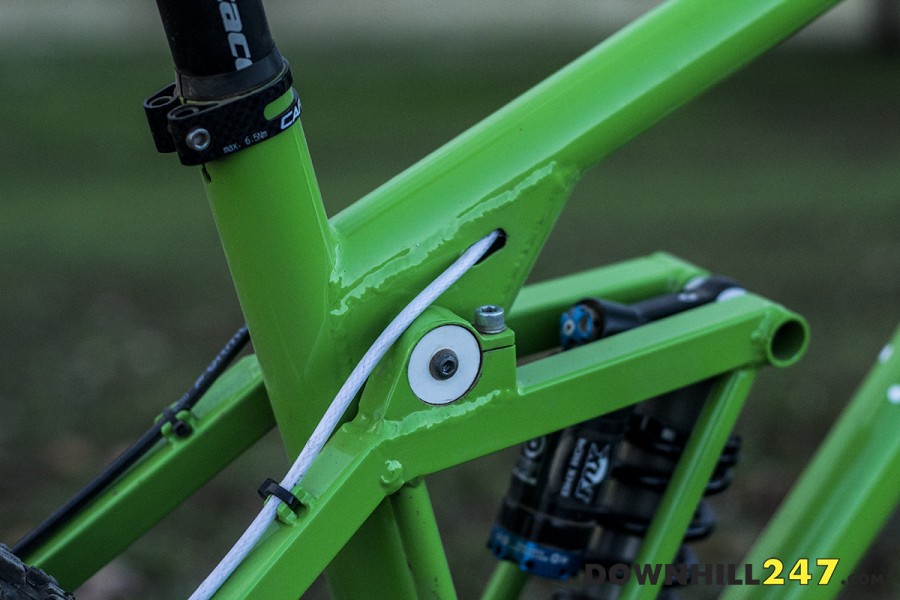
Wow, that is quite frankly amazing and hugely inspiring. What sets this bike apart from the majority of what is in the market out there at the moment?
The unique thing about this bike is the a�?floatinga�� idler. The idler is mounted on a pair of links, so that it tracks along an arc as the suspension is compressed. Because the idler moves relative to the front and rear chainrings, it means that chain growth/shrinkage can be strategically controlled by the idler throughout suspension travel. During design, by altering the length and location of the idler links, it means that the anti-squat curve can be tuned independently of other design variables. Finally, all this means that Ia��m able to design the bike with a specific anti-squat curve that provides an incredibly supportive pedaling platform, without compromising other suspension characteristics.
What are your plans for the bike and suspension design, are you trying to make and sell direct to the public or are you investigating other options?
For the time being, Ia��m really enjoying making prototypes in my shed; however these wona��t ever be for sale. My main goal is to license my suspension system to bike manufacturers that are keen to try something different. I-track suspension can be implemented in many different ways, so I would work closely with the bike manufacturer to help develop a product that suits their design philosophies.
If none of that works out, then I may consider doing small production runs under my own brand, however that would be a last resort.
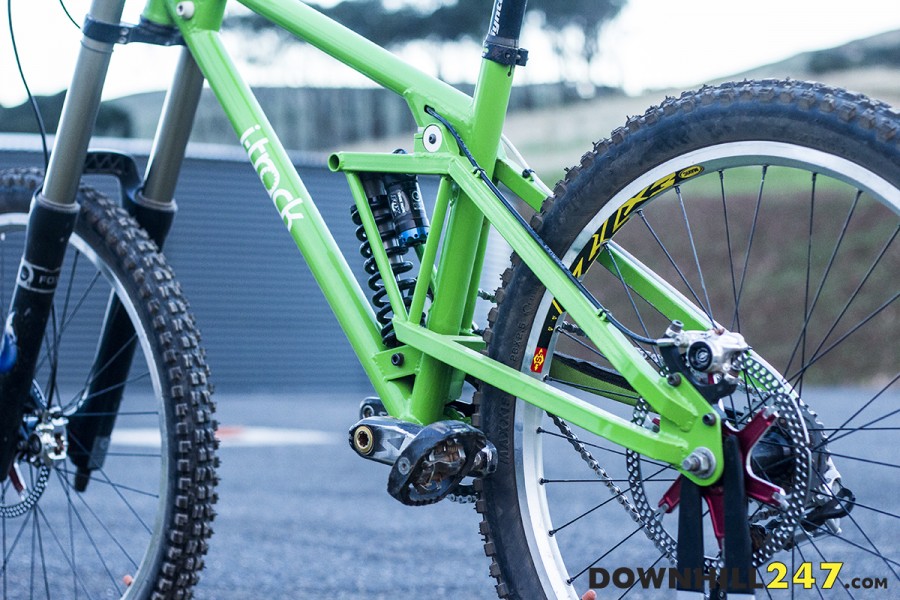
Hold the press! As we were putting the finishing touches on this article we got some more exciting news from Hugh regarding frame number two and what the future holds for him, read on;
The future (short term):A�I’m planning on taking two bikes to Interbike in September this year, to try and get some publicity, and also talk to as many industry people as possible. I’ve also started working with a company that makes high-end dampers for motorsport applications. They’re keen to get into the MTB industry, so it’s really exciting to be helping them out. I don’tA�think we’ll see any commercially available products for a little while, but I do envisage some high-tech testing sessions in the veryA�near future.
The next bike I build will probably be an All-Mountain bike, as that’s really the most appropriate application for my suspension systems. With SRAM releasing a more affordable 1×11 drivetrain, it makes my suspension designs a much more viable option in this genre.
The future (long term): I’m not really sure what will happen in the long term. A�If things go well, I’ll be helping out manufacturers that want to use my designs. Hopefully I’ll be able to generate some sort of income too, so that I can spend less time doing my ‘real’ job, and more time playing with bikes. If things don’t go well, I’ll still enjoy making bikes for myself, the way I want them. It’s kind of a win-win situation!
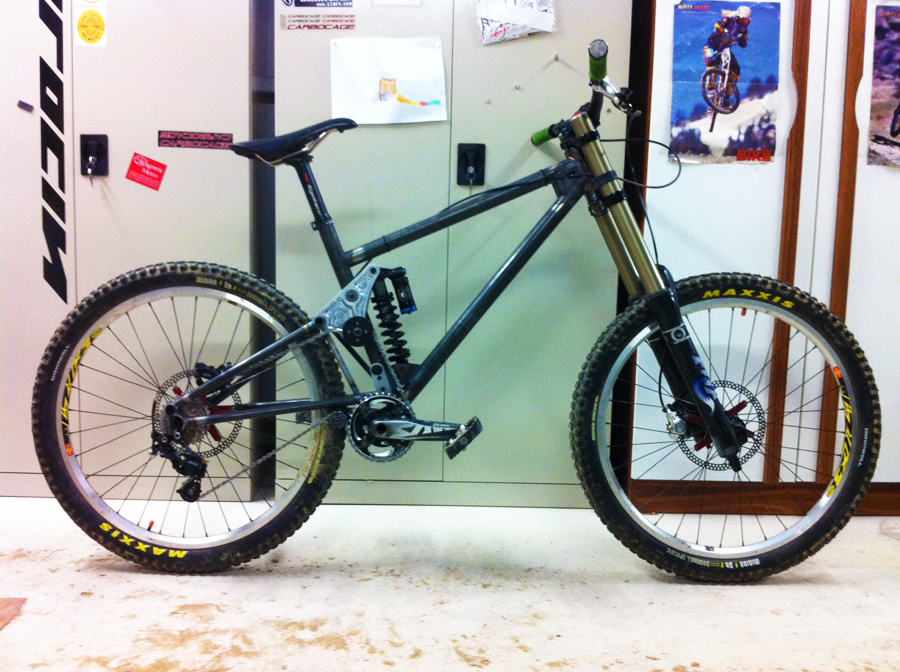
Regarding the new bike P2 versus the original bike P1 there are differences and best explained technically;
With P1, the axle path is determined by a single pivot, and the shock is directly actuated between the swingarm and the front triangle. The idler is mounted between a pair of links, which causes it to move rearwards/upwards along an arc as the suspension compresses. The rate and direction of this idler movement is very specific and deliberate, and it produces a particular shape anti-squat curve.
With P2, the axle path is determined by a 4-bar linkage, and the shock is actuated by the upper link. The idler is mounted to the upper link, and it moves rearwards/upwards in an arc as the suspension compresses. Being a 4-bar system, the instant centre can be positioned further forwards than is physically possible with a ‘single pivot’ system, which results in less anti-rise (aka ‘brake jack’).
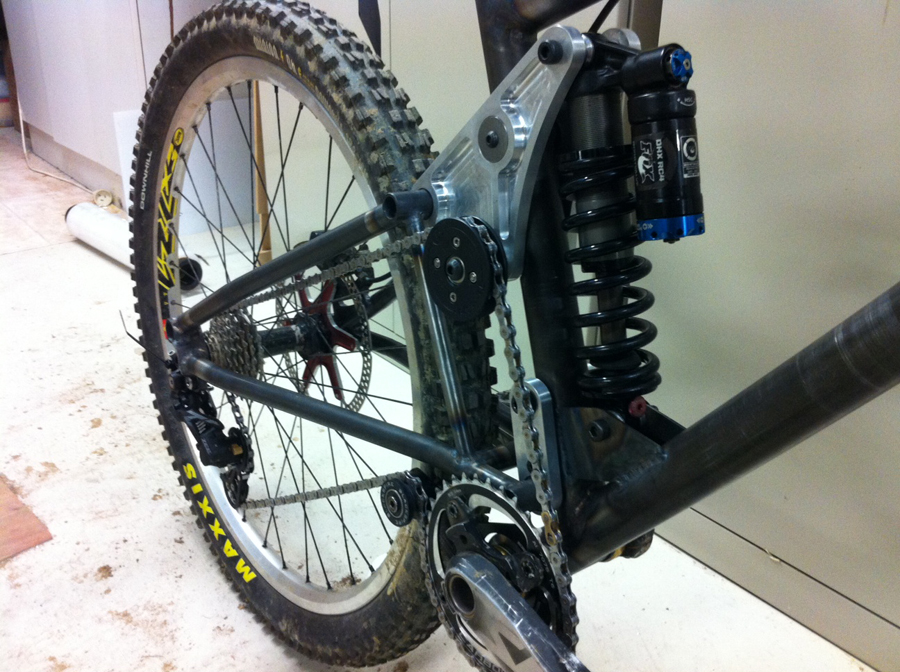
P2 provides a much more progressive leverage ratio than P1. P2 is a bit longer and lower than P1.
Both bikes have a rearward axle path, to allow for better absorption of frontal impacts. Both bikes have the idler configured to produce a specific anti-squat curve: Increasing anti-squat in the pedalling zone of suspension travel (to provide a very supportive pedalling platform), and decreasing anti-squat beyond about 70% travel (to minimise pedal feedback on bigger suspension compressions).
So there you have it, an insight into one of the most interesting bikes we have come across in a long time! If people want to find out more what is the best way?
Therea��s a stack of information on my website: www.i-tracksuspension.com
And Ia��m very happy to respond to emails from people that are interested to learn more: info@i-tracksuspension.com
